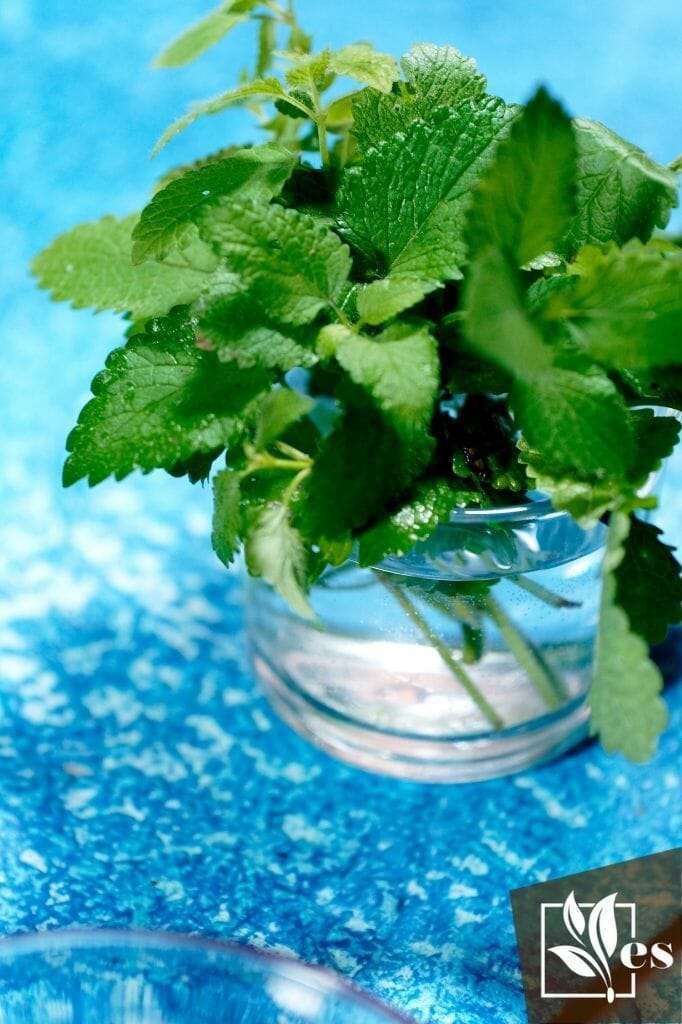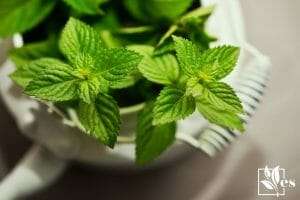 White spots on mint leaves may appear worrisome if you are a beginner plant parent, as this can be a sign of an underlying problem. However, in most cases, the cause might be innocuous and easily reversible with just a little effort.
White spots on mint leaves may appear worrisome if you are a beginner plant parent, as this can be a sign of an underlying problem. However, in most cases, the cause might be innocuous and easily reversible with just a little effort.
In this article, we give you the four main reasons why your mint leaves might be turning white, as well as what you can do about it. Also, check out what pests can eat your mint plant to prevent this from happening.
JUMP TO TOPIC
Why Are Mint Leaves Turning White?
Mint leaves turning white can be caused by fungal diseases, pest problems or viral infections. It is often one of the biggest headaches gardeners and plant keepers face with these beautiful scented plants.
The leaves on a mint plant are present in the form of pairs on each side of the stem. Each leaf is oval in shape with a carpet of fine hair on its surface. Continue reading to find out why they might possibly be turning white.
– Fungal Infections: Powdery Mildew
Powdery mildew is a fungal infection that most often besets mint plants when there is a lapse of maintenance on the part of the carers.
– How To Identify a Powdery Mildew Infection
A powdery mildew infection appears like white powder on mint leaves. This is most prominent on the upper surfaces of the leaves. Your leaves will look like someone has sprinkled flour on them, and on close inspection, you will be able to make out individual spots that are separate from each other.
– What Causes a Mildew Infection
Your mint plant will suffer from fungal infections like powdery mildew when it is kept under unnaturally moist conditions.
Overwatering is one of the main reasons why plants develop fungal infections. Poorly draining soil or a pot with an inadequate drainage hole will also store water for longer than needed, leading to the development of powdery mildew and root rot.
Using gardening shears to remove diseased parts of one plant and then using the same shears on another plant without disinfecting them first is another main reason why these infections might be spreading across your garden.
– Pest Problems: Spider-mites
Spider-mites love to attack the mint plant and cause problems for it. They cluster together on the underside of leaves, whether old or new, and cause damage to your leaves by puncturing them with tiny holes.
– How To Identify a Spider-mite Infestation
Tiny white spots on mint leaves will occur in the case of a spider-mite infestation. Turn over the lower side of the leaf and you will see it teeming with small, two-spotted insects.
– What Causes This
Spider-mites love hot and moist conditions. They seek out locations like the underside of leaves to act as their breeding ground. These pests reproduce and thrive very rapidly and can destroy your mint plant within months.
– Thrips
Thrips are tiny insects that are also known to often attack the mint plant. Find out what type of damage they produce below.
– How To Identify a Thrips Attack
White mint leaves are an indication of a thrips attack. Sometimes, silver patches will also appear on your mint leaves, and the edges of these leaves will begin to discolor and turn into a shade of bronze. There are times when the only symptom of a thrips infestation might be tiny silver spots on the leaves of your mint plant.
– What Causes This
Thrips like to suck the sap out of the leaves and stems of your plant. They compete with the plants for nutrients, turning healthy green leaves white or silver. Thrips also make your plant more vulnerable to viral infections.
– Viral Infections
A group of viruses known as mosaic viruses has been known to attack mint plants and cause significant damage.
– How To Identify a Viral Infection
If your mint plant is suffering from a viral infection, the first symptom would be loss of the leaves’ dark green color. This will be followed by a mosaic-like pattern of white, yellow and bright green dots on the leaves. Later on, your leaves will begin to die and exfoliate.
– What Causes This
Many insects such as thrips, whiteflies and mealybugs act as vectors for viral infection. They are mostly responsible for transferring infection from one plant to another. You yourself can also infect your plant inadvertently using infected gardening tools.
– How To Deal With Mosaic Virus
We’re afraid we have bad news in this regard. Once a plant has been infected with any of the numerous mosaic viruses, there is little to no hope of its survival. The most you can do is prevent the spread of these viruses to your other plants.
Destroy the affected plant, and don’t forget to sterilize the instruments you used on them before using them on other plants.
What You Can Do About White Patches on Mint Leaves
For every problem, there is almost always a cure. Once you have successfully identified the culprit behind those white specks on mint leaves, you can now move on to appropriate treatment.
– Treating Fungal Infections: Powdery Mildew
Lucky for you, a powdery mildew infection isn’t particularly damaging or fatal to your mint plant, but if the white dots on mint leaves are bothering you, continue reading to find out how to treat a mildew infection.
- Remove all leaves that have white spots on them. Use sharp gardening shears for this.
- If the majority of leaves have these powdery spots, then only remove the most severely affected ones.
- Instead of jumping to drugstore-bought chemical fungicides, you should always start treating mildew with natural remedies.
- Neem oil is a natural fungicide and antiseptic. Applying neem oil to the affected leaves daily works out great for the plants (make sure the neem oil is not expired).
- Another DIY trick is to mix one part milk with three parts water and spray it directly on the leaves. This should be done only once a week and is also quite an effective remedy.
- You can make a baking soda concoction that is very effective at killing mildew spores. Mix one tablespoon of baking soda with one teaspoon of soap and wash your plant with it along with one gallon of water. Mildew will be gone in no time.
– Treating Pests: Spider-mites and Thrips
- Inspect your mint plant carefully for signs of spider-mites and thrips attacks. Especially look under leaves and sheaths of cork on the stems. These are the favorite hiding spots of these bugs.
- You should start by trying to physically dislodge these insects from your plant. Either take a tissue paper and pick them off or use a pressurized water hose to rinse them off.
- Our experts also suggest washing the plant gently using soap and water.
- An insecticide or pesticide should be your last option if all the above-mentioned tips fail and the bugs still continue to persist. Buy a mild one and use it as instructed on the label.
The Mint Plant
The Mint plant is a perennial herb that is very popular as a household plant. It has dark, green, pointed leaves that emit a most refreshing aroma. These leaves have been used the world over for a number of health remedies as well as for making teas and smoothies. Check out these mint-like plants to learn how to properly identify them.
Prevention: How To Protect Your Mint Plant
Protect your plant from developing white dots on mint leaves by following a regular maintenance regime.
- Always take good care of your plant. Start by placing it in an environment it likes; mint plants should be kept in a shady, slightly humid place with good air circulation.
- Remove old, dead and dry leaves regularly to prevent insects from accumulating under them.
- Water according to a schedule. Overwatering will lead to fungal rots that are the number one cause of white spots on mint leaves.
- Use a well-draining and medium-rich soil that also contains sufficient organic matter.
– Can You Eat Mint Plants With White Spots on the Leaves?

Frankly speaking, the answer is yes. The flavor might not be the same or as good, but generally, such mint leaves are safe to eat. In case of a powdery mildew infection, the worst you might get is a mild stomach ache. White mint leaves due to pests and bugs can also be safely eaten as long as you’re not consuming the actual bugs.












